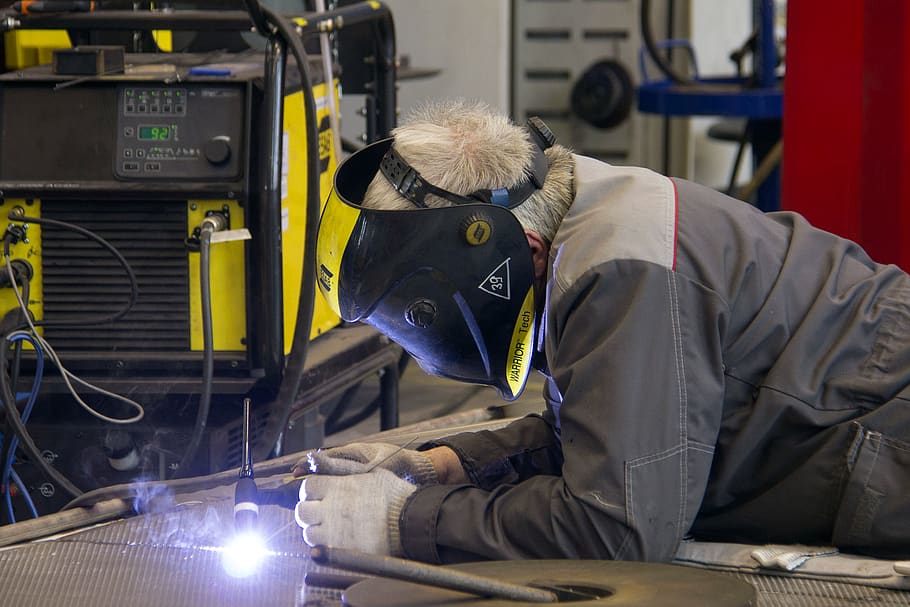
Are you fascinated by the art of welding and want to learn how to weld like a pro? Welding is a versatile skill that opens up a world of creative possibilities, from building structures to crafting intricate metal designs. Whether you’re a complete beginner or looking to refine your existing welding skills, this article will guide you through the essential steps, techniques, and tips to weld like a seasoned professional.
Welding is the process of joining metals using high heat to melt and fuse them together, creating a strong and durable bond. It’s a fundamental skill used in various industries, including construction, manufacturing, and artistry. Learning to welding guide requires patience, practice, and a willingness to experiment.
Contents
Understanding Different Welding Techniques
MIG Welding
MIG (Metal Inert Gas) welding, also known as Gas Metal Arc Welding (GMAW), is a common welding method that uses a continuous wire electrode. It’s versatile, making it suitable for various metals and thicknesses.
TIG Welding
TIG (Tungsten Inert Gas) welding, or Gas Tungsten Arc Welding (GTAW), is known for its precision and quality welds. It uses a non-consumable tungsten electrode and is ideal for thin materials and critical joints.
Stick Welding
Stick welding, or Shielded Metal Arc Welding (SMAW), is a robust technique suitable for outdoor and challenging environments. It uses a consumable electrode coated in flux to create strong welds.
Essential Safety Precautions
Before striking an arc, prioritize safety:
Protective Gear
Wear appropriate gear, including a welding helmet, flame-resistant clothing, gloves, and steel-toed boots to shield yourself from sparks and heat.
Proper Ventilation
Work in a well-ventilated area or use an exhaust system to prevent inhaling harmful fumes and gases produced during welding.
Fire Safety
Keep a fire extinguisher nearby and remove flammable materials from your workspace to avoid potential fire hazards.
Setting Up Your Welding Workspace
Choosing the Right Location
Select a clear and open space with sufficient room to move around comfortably. Ensure there are no combustible materials nearby.
Welding Equipment and Tools
Gather your welding machine, appropriate electrodes, filler metals, clamps, and a welding table. Check your equipment regularly for proper functioning.
Mastering Basic Welding Skills
Creating Strong Joints
Focus on clean surfaces, proper fit-up, and the correct angle to achieve strong, durable weld joints.
Managing Heat and Speed
Maintain a consistent travel speed and regulate heat to prevent burn-through or insufficient fusion.
Practice on Scrap Metal
Before tackling major projects, practice on scrap metal to refine your technique and build confidence.
Advanced Welding Techniques
Welding Thin Materials
When working with thin metals, adjust your settings to lower heat and use a skilled technique to prevent warping.
Vertical and Overhead Welds
Master welding in challenging positions by adjusting your technique to maintain proper penetration and bead appearance.
Welding Dissimilar Metals
Some projects require welding different metals. Research proper techniques and use appropriate filler material for a strong bond.
Achieving Aesthetic Welds
Welding Aesthetics
Focus on creating visually appealing welds by maintaining consistent bead size and avoiding undercuts.
Grinding and Finishing
After welding, grind down rough edges and surfaces for a clean and polished finish.
Troubleshooting Common Welding Issues
Weld Porosity
Address weld porosity by ensuring proper gas flow and using clean materials free of rust, paint, or contaminants.
Uneven Bead Appearance
Achieve even bead appearance by maintaining consistent travel speed and electrode angle.
Arc Instability
Arc instability can result from incorrect settings or poor technique. Practice and experimentation can help you achieve stable arcs.
Expanding Your Welding Knowledge
Online Resources and Communities
Explore online forums, tutorials, and social media groups dedicated to welding to learn from experienced welders and share your experiences.
Attending Workshops and Classes
Consider attending workshops or classes at local trade schools or community colleges to receive hands-on instruction from professionals.
The Road to Welding Mastery
Becoming a skilled welder takes time and dedication. Embrace the learning process, continuously refine your technique, and take on challenging projects to expand your skills.
Conclusion
Welding is a rewarding skill that combines artistry with craftsmanship. By mastering both basic and advanced techniques, you can weld like a pro and bring your creative visions to life in metal. Remember to prioritize safety, invest in quality equipment, and never stop exploring the possibilities of this versatile craft.
FAQs
Is welding dangerous?
Welding can be dangerous due to the heat, sparks, and fumes involved. However, with proper safety measures and equipment, the risks can be minimized.
Can I weld different types of metals together?
Yes, you can weld different types of metals together using appropriate techniques and filler materials.
What is the best welding method for beginners?
MIG welding is often recommended for beginners due to its ease of use and versatility.
Do I need formal training to become a proficient welder?
While formal training can be beneficial, many skilled welders are self-taught through practice and learning from online resources.
Where can I find welding projects to practice my skills?
You can find welding projects in DIY books, online tutorials, and welding communities that offer project ideas for different skill levels.